Impulse and Momentum Change - Complete Toolkit
Objectives
- To define momentum, identify the equation relating momentum to mass and velocity, identify the units of momentum, and identify the direction of the momentum vector.
- To define impulse and describe its affect upon an object’s momentum.
- To use the impulse-momentum change equation to analyze a collision in order to determine an unknown quantity in a collision problem.
- To use the impulse-momentum change equation as a guide to thinking about how a change in one quantity affects another quantity.
- To explain a variety of applications of the impulse-momentum change equation that pertain to safety.
Readings from The Physics Classroom Tutorial
Teaching Manual for a Momentum Unit
- Reference Guide on Teaching Momentum
 The opening page of this manual contains its central message: "Impulse should be uttered in the same breath with momentum". This resource was developed and edited by the respected Physics Teacher Resource Agents (PTRA), a project sponsored by the American Association of Physics Teachers. It's intended to support high school teachers in teaching impulse and collision, conservation of momentum, and the relationship between momentum and energy conservation. It's also chock full of cool demo ideas and unique labs we bet you've never tried. Don't miss the Bifilar Pendulum Collision activity!
The opening page of this manual contains its central message: "Impulse should be uttered in the same breath with momentum". This resource was developed and edited by the respected Physics Teacher Resource Agents (PTRA), a project sponsored by the American Association of Physics Teachers. It's intended to support high school teachers in teaching impulse and collision, conservation of momentum, and the relationship between momentum and energy conservation. It's also chock full of cool demo ideas and unique labs we bet you've never tried. Don't miss the Bifilar Pendulum Collision activity!
Interactive Simulations
- PhET Collision Lab Interactive Simulation
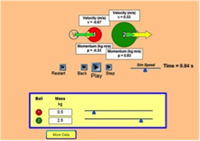 Investigate simple collisions in one dimension or more complex collisions. You can experiment with the number of discs, masses, and initial conditions. The simpler 1D simulation allows beginners to explore what "elasticity" means, while the 2D sim lets them apply the Law of Conservation of Momentum to solve problems. One really nice feature is the ability to vary the elasticity to see how this factor affects changes in mechanical energy. For beginning learners, we recommend this student guide, developed by HS teacher Chris Bires to accompany Collisions in 1D: http://phet.colorado.edu/en/contributions/view/3331
Investigate simple collisions in one dimension or more complex collisions. You can experiment with the number of discs, masses, and initial conditions. The simpler 1D simulation allows beginners to explore what "elasticity" means, while the 2D sim lets them apply the Law of Conservation of Momentum to solve problems. One really nice feature is the ability to vary the elasticity to see how this factor affects changes in mechanical energy. For beginning learners, we recommend this student guide, developed by HS teacher Chris Bires to accompany Collisions in 1D: http://phet.colorado.edu/en/contributions/view/3331
- Egg Drop Interactive Physics Interactive
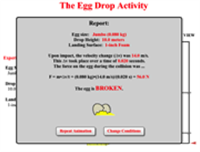 The Egg Drop Interactive provides a virtual egg drop activity. Learners can vary the mass of the egg that is dropped, the height from which it is dropped, and the surface onto which it is dropped. The egg drop is simulated and the result is displayed. The impulse-momentum change theorem is used to show how the force is calculated from the egg drop parameters that are selected. The Interactive provides an eggcellent demonstration of how alterations in one variable affect another variable. It comes with and exercise page that guides students through the Interactive with an exercise in science-reasoning. Written in HTML5; compatible with tablets such as the iPad and Chromebooks, making it a perfect tool for the 1:1 classroom.
The Egg Drop Interactive provides a virtual egg drop activity. Learners can vary the mass of the egg that is dropped, the height from which it is dropped, and the surface onto which it is dropped. The egg drop is simulated and the result is displayed. The impulse-momentum change theorem is used to show how the force is calculated from the egg drop parameters that are selected. The Interactive provides an eggcellent demonstration of how alterations in one variable affect another variable. It comes with and exercise page that guides students through the Interactive with an exercise in science-reasoning. Written in HTML5; compatible with tablets such as the iPad and Chromebooks, making it a perfect tool for the 1:1 classroom.
Video and Animations
- Physlet Physics: Momentum Illustrations
 This is a set of 8 focused Java animations that would be ideal warm-ups for introducing momentum and impulse. The set includes "The Difference Between Impulse and Work", "Hard and Soft Collisions and the Third Law", "Microscopic View of a Collision", and "Center of Mass". Each one is accompanied by an explanation of the physics and examples of how to employ the mathematics.
This is a set of 8 focused Java animations that would be ideal warm-ups for introducing momentum and impulse. The set includes "The Difference Between Impulse and Work", "Hard and Soft Collisions and the Third Law", "Microscopic View of a Collision", and "Center of Mass". Each one is accompanied by an explanation of the physics and examples of how to employ the mathematics.
- Physics of Superheroes: Death of Gwen Stacy
 Want to spark a great discussion about the impulse/momentum relationship (and who doesn't?) This 5-minute video features University of Minnesota physics professor Jim Kakalios proving how Spiderman's girlfriend, Gwen Stacy, died. It wasn't because of the "shock of the fall" as the Green Goblin said. It happened because Spidey's webbing caused Gwen to stop too fast from a plummeting descent. Dr. Kakalios uses a combination of humor and math to show how the scenario can be calculated using the equation p = m•v. Oh....Spiderman learned from this mistake. In future rescues, he launches himself to match the speed of the falling victims and spreads the impulse of the abrupt stop over time.
Want to spark a great discussion about the impulse/momentum relationship (and who doesn't?) This 5-minute video features University of Minnesota physics professor Jim Kakalios proving how Spiderman's girlfriend, Gwen Stacy, died. It wasn't because of the "shock of the fall" as the Green Goblin said. It happened because Spidey's webbing caused Gwen to stop too fast from a plummeting descent. Dr. Kakalios uses a combination of humor and math to show how the scenario can be calculated using the equation p = m•v. Oh....Spiderman learned from this mistake. In future rescues, he launches himself to match the speed of the falling victims and spreads the impulse of the abrupt stop over time.
- The Science of Speed: Momentum and Time
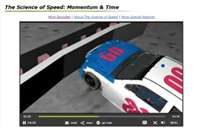 This 4.5 minute video sponsored by the National Science Foundation delves into the science behind the SAFER Barrier walls on NASCAR tracks. How do they keep drivers safer in crashes, and what does that have to do with momentum/impulse? "Increasing the collision time from 1/10 of a second to 2/10 of a second may not sound like much, but it decreases the force by up to half," explains UT physics professor Deandra Leslie-Pelecky. The video also explores how seat belts and the HANS (Head-and-Neck Safety) device help spread out the force of impact and save lives.
This 4.5 minute video sponsored by the National Science Foundation delves into the science behind the SAFER Barrier walls on NASCAR tracks. How do they keep drivers safer in crashes, and what does that have to do with momentum/impulse? "Increasing the collision time from 1/10 of a second to 2/10 of a second may not sound like much, but it decreases the force by up to half," explains UT physics professor Deandra Leslie-Pelecky. The video also explores how seat belts and the HANS (Head-and-Neck Safety) device help spread out the force of impact and save lives.
- Smarter Every Day: Underwater Explosions
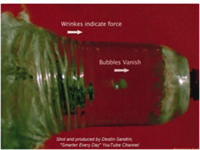 Detonating a small explosion in water and recording the event with a Phantom high speed camera offers a unique way to observe impulse and momentum in a fluid. Author/host is mechanical engineer Destin Sandlin, who provides not just breathtaking video, but also backs it up with diagrams and relevant equations. Don't expect your beginning students to tackle the math. Expected takeaways: 1) Most explosions begin as an isolated system, but become non-isolated as the containment structure fails upon detonation, and 2) The physics of explosions can be complex - involving impulse/momentum, energy conversion, and rapid pressure change.
Detonating a small explosion in water and recording the event with a Phantom high speed camera offers a unique way to observe impulse and momentum in a fluid. Author/host is mechanical engineer Destin Sandlin, who provides not just breathtaking video, but also backs it up with diagrams and relevant equations. Don't expect your beginning students to tackle the math. Expected takeaways: 1) Most explosions begin as an isolated system, but become non-isolated as the containment structure fails upon detonation, and 2) The physics of explosions can be complex - involving impulse/momentum, energy conversion, and rapid pressure change.
- LivePhoto Physics
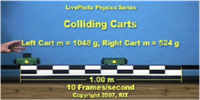 This resource consists of six short Quicktime videos of a cart moving from left to right colliding with a stationary cart. Mass is varied in each video so that three elastic collisions and three inelastic collisions are depicted. The videos were developed for computer analysis in introductory physics classrooms. Each video is 10-30 frames in length and may be viewed in step motion or real-time. Position and time data may be measured and collected by using video-analysis software.
This resource consists of six short Quicktime videos of a cart moving from left to right colliding with a stationary cart. Mass is varied in each video so that three elastic collisions and three inelastic collisions are depicted. The videos were developed for computer analysis in introductory physics classrooms. Each video is 10-30 frames in length and may be viewed in step motion or real-time. Position and time data may be measured and collected by using video-analysis software.
Labs and Investigations
- The Physics Classroom, The Laboratory, Being Impulsive About Momentum
Students use motion detectors and force probes to gather data and compare values of the impulse and momentum change of an object.
- The Physics Classroom, The Laboratory, Balloon Toss
Students use a balloon toss activity to investigate the effect of mass, collision time, and velocity change upon the collision force.
- The Physics Classroom, The Laboratory, Rebounding versus Sticking
Students use a motion detector and a force probe to compare value of impulse and momentum change for elastic and inelastic collisions.
Link: http://www.physicsclassroom.com/lab#mom
Demonstration Ideas
- Flinn Scientific: Bouncing with Momentum
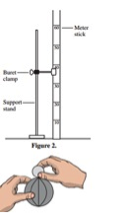 This activity can be done as a teacher demo or as a cooperative learning exercise. Students will place a ping-pong ball on top of a mini-basketball, then simultaneously drop both balls. The mini-basketball, having more momentum, will hit the floor and rebound upwards…..colliding into the ping-pong ball. When the balls collide, the momentum of the basketball is imparted to the ping-pong ball. The resource includes sample data tables.
This activity can be done as a teacher demo or as a cooperative learning exercise. Students will place a ping-pong ball on top of a mini-basketball, then simultaneously drop both balls. The mini-basketball, having more momentum, will hit the floor and rebound upwards…..colliding into the ping-pong ball. When the balls collide, the momentum of the basketball is imparted to the ping-pong ball. The resource includes sample data tables.

Minds On Physics Internet Modules:
The Minds On Physics Internet Modules are a collection of interactive questioning modules that target a student’s conceptual understanding. Each question is accompanied by detailed help that addresses the various components of the question.
- Momentum and Collisions module, Ass’t MC1 - Momentum
- Momentum and Collisions module, Ass’t MC2 - Impulse and Momentum Change
- Momentum and Collisions module, Ass’t MC3 - Impulse-Momentum Change Variables
Concept Building Exercises:
- The Curriculum Corner, Momentum and Collisions, Momentum, Impulse and Momentum Change
- The Curriculum Corner, Momentum and Collisions, Controlling a Collision
- The Curriculum Corner, Momentum and Collisions, Simple Computations with Impulse = Momentum Change
Link: http://www.physicsclassroom.com/curriculum/momentum
Problem-Solving Exercises:
- The Calculator Pad, Momentum and Collisions, Problems #1 - #11
Science Reasoning Activities:
- Science Reasoning Center, Momentum and Collisions, Marshmallow Launcher
- Science Reasoning Center, Momentum and Collisions, Air bag Inflation and Passenger Safety
Link: http://www.physicsclassroom.com/reasoning/momentum
Real Life Connections:
- Understanding Car Crashes – It’s Basic Physics Video and Teachers Guide
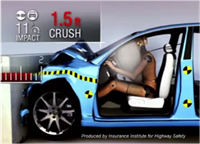 This 22-minute video goes behind the scenes at the Insurance Institute for Highway Safety to give students an up-close look at the physics of car crashes. Using a series of vehicle maneuvers on test tracks plus high-resolution film of vehicle crash tests, the video explores the relationship between crash forces and inertia, momentum/impulse, and more. The narrator, Griff Jones, is a high school physics teacher who makes the topics come to life in a manner easily comprehensible to teenagers. For a complete Teacher's Guide, click here: Understanding Car Crashes - Teachers Guide
This 22-minute video goes behind the scenes at the Insurance Institute for Highway Safety to give students an up-close look at the physics of car crashes. Using a series of vehicle maneuvers on test tracks plus high-resolution film of vehicle crash tests, the video explores the relationship between crash forces and inertia, momentum/impulse, and more. The narrator, Griff Jones, is a high school physics teacher who makes the topics come to life in a manner easily comprehensible to teenagers. For a complete Teacher's Guide, click here: Understanding Car Crashes - Teachers Guide
- Problem-Based Learning: Collision Investigation Classroom Activity
 PBL (Problem-Based Learning) activity for introductory physics relating to conservation of momentum, frictional force, and kinetic energy. This scenario involves a crash where a small car is struck broadside by a vehicle of more than double its mass. Students have the task of determining whether either driver engaged in reckless driving. To solve the problem, students work cooperatively to determine the coefficient of friction on the roadway, velocity of each vehicle at the time of the crash, and velocity of the vehicles prior to braking. They will use a combination of strategies: Work-Energy Theorem and kinematic equations.
PBL (Problem-Based Learning) activity for introductory physics relating to conservation of momentum, frictional force, and kinetic energy. This scenario involves a crash where a small car is struck broadside by a vehicle of more than double its mass. Students have the task of determining whether either driver engaged in reckless driving. To solve the problem, students work cooperatively to determine the coefficient of friction on the roadway, velocity of each vehicle at the time of the crash, and velocity of the vehicles prior to braking. They will use a combination of strategies: Work-Energy Theorem and kinematic equations.
Common Misconceptions:
- Terminology - Force, Impulse, Momentum, Momentum Change, Velocity Change
Students clearly need more time than instructors perceive that they need in order to internalize and distinguish between the many concepts associated with impulse and momentum change. Inevitably, two terms with entirely different meaning will become equated with one another and used interchangeably. For instance, a student might think that impulse is the same as force and not be able to identify force as one of two quantities that comprise the concept of impulse (time being the other). Similarly, a student might confuse velocity change with momentum change, thinking that they are one in the same concepts. As always, direct questioning and lots of practice is important to help students learn to appropriately use the terms in context. And of course, The Physics Classroom believes that the Minds On Physics Internet Modules excels at helping students to identify their incorrect conceptions and work towards conceptual change.
- Rebounding Collisions are Safer than Inelastic Collisions
A common thought-provoking question goes something like this: If a car were to have a collision with a wall, would the driver and passengers be safer if the car crumpled as a result of the collision or rebounded as the result of the collision? Most students resort to the false conclusion that a rebounding collision is safer. After all (so their logic goes), the car is totally ruined in a crumpled up collision. It takes some time to convince students that cars are designed to crumple and not rebound in order to reduce the force on the passengers. The car may be totaled but the passengers are not. The use of some simple numbers and calculations is particularly effective presentation. See the Controlling a Collision in the Concept Building Exercises above.
Standards:
A. Next Generation Science Standards (NGSS)
Performance Expectations – Motion and Stability: Forces and Interactions
- HS-PS2-3 Apply scientific and engineering ideas to design, evaluate, and refine a device that minimizes the force on a macroscopic object during a collision.
- HS-PS2-2 Use mathematical representations to support the claim that the total momentum of a system of objects is conserved when there is no net force on the system.
Disciplinary Core Ideas
- HS-PS2.A.ii Momentum is defined for a particular frame of reference; it is the mass times the velocity of the object.
Crosscutting Concepts
Stability and Change
- Much of science deals with constructing explanations of how things change and how they remain stable.
- Systems can be designed for greater or lesser stability.
- Change and rates of change can be quantified and modeled over very short or very long periods of time. Some system changes are irreversible.
Systems and System Models
- When investigating or describing a system, the boundaries and initial conditions of the system need to be defined and their inputs and outputs analyzed and described using models.
- Models can be used to predict the behavior of a system, but these predictions have limited precision and reliability due to the assumptions and approximations inherent in models.
- Models (e.g., physical, mathematical, computer models) can be used to simulate systems and interactions – including energy, matter, and information flows – between and within systems at different scales.
Science and Engineering Practices
Practice #1: Analyzing and Interpreting Data
- Analyze data using computational models in order to make valid and reliable scientific claims.
Practice #2: Developing and Using Models
- Develop and use a model based on evidence to illustrate the relationships between systems or between components of a system.
- Use a model to provide mechanistic accounts of phenomena.
Practice #3: Planning and Carrying Out Investigations
- Plan and conduct an investigation individually and collaboratively to produce data to serve as the basis for evidence, and in the design: decide on types, how much, and accuracy of data needed to produce reliable measurements and consider limitations on the precision of the data (e.g., number of trials, cost, risk, time), and refine the design accordingly.
Practice #6: Obtaining, Evaluating, and Communicating Information
- Communicate scientific ideas (e.g. about phenomena and/or the process of development and the design and performance of a proposed process or system) in multiple formats (including orally, graphically, textually, and mathematically).
Practice #8: Using Mathematics and Computational Thinking
- Use mathematical representations of phenomena to describe explanations.
- Create a computational model or simulation of a phenomenon, designed device, process, or system.
- Use mathematical models and/or computer simulations to predict interactions between systems.